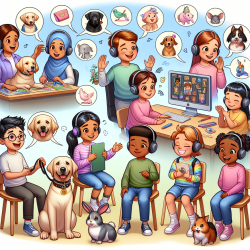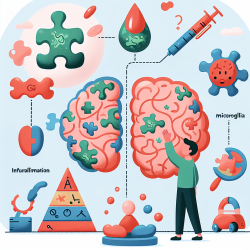Animal-assisted education (AAE) has emerged as a promising approach to enhance the behavioral and emotional outcomes of elementary school students. A recent study, titled "Animal-Assisted Education: Exploratory Research on the Positive Impact of Dogs on Behavioral and Emotional Outcomes of Elementary School Students," provides compelling evidence supporting the integration of AAE into educational settings. This blog will explore the key findings of the study and offer practical recommendations for practitioners seeking to improve their skills by implementing AAE or encouraging further research in this field.
Key Findings from the Study
The study conducted a mixed-methods approach, including surveys and observational studies, to assess the impact of AAE on students aged 8 to 13 years. Here are some of the significant outcomes:
- Improved Self-Confidence: Students participating in the AAE program reported significantly higher self-confidence after the intervention.
- Enhanced Social Relationships: Students showed more positive relationships with peers and teachers, as indicated by both self-reports and teacher assessments.
- Better Work Attitude and Behavior: Teachers observed notable improvements in students' work attitudes, pleasant behavior, emotional stability, and social behavior.
- Increased Verbal and Non-Verbal Communication: Observational data revealed that students exhibited higher levels of verbal and non-verbal communication, except for eye contact.
Practical Recommendations for Practitioners
Based on the study's findings, practitioners can take several steps to incorporate AAE into their practice effectively:
- Integrate Trained Dogs into Therapy Sessions: Utilize trained dogs in individual or group therapy sessions to foster a supportive and engaging environment for students.
- Focus on Building Self-Confidence: Design activities that encourage students to interact with dogs, helping them build self-confidence through positive reinforcement and successful task completion.
- Enhance Social Skills: Facilitate interactions between students and dogs to improve social skills, such as empathy, cooperation, and communication.
- Monitor Behavioral Changes: Regularly assess students' behavioral and emotional progress using validated instruments like the Dutch Instrument for Social-Emotional Development (VISEON).
- Collaborate with Educators: Work closely with teachers to integrate AAE into the classroom setting, ensuring a cohesive approach to student development.
Encouraging Further Research
While the study provides valuable insights, it also highlights the need for further research to understand the long-term effects and underlying mechanisms of AAE. Practitioners are encouraged to:
- Conduct Longitudinal Studies: Explore the sustained impact of AAE on students' emotional and behavioral outcomes over extended periods.
- Investigate Diverse Populations: Assess the effectiveness of AAE across different age groups, cultural backgrounds, and educational settings.
- Examine Mechanisms: Study the specific mechanisms through which AAE influences emotional and behavioral development, such as the role of intrinsic motivation and play.
By implementing these recommendations and encouraging further research, practitioners can contribute to the growing body of evidence supporting the benefits of AAE for children's development.
To read the original research paper, please follow this link: Animal-Assisted Education: Exploratory Research on the Positive Impact of Dogs on Behavioral and Emotional Outcomes of Elementary School Students.










